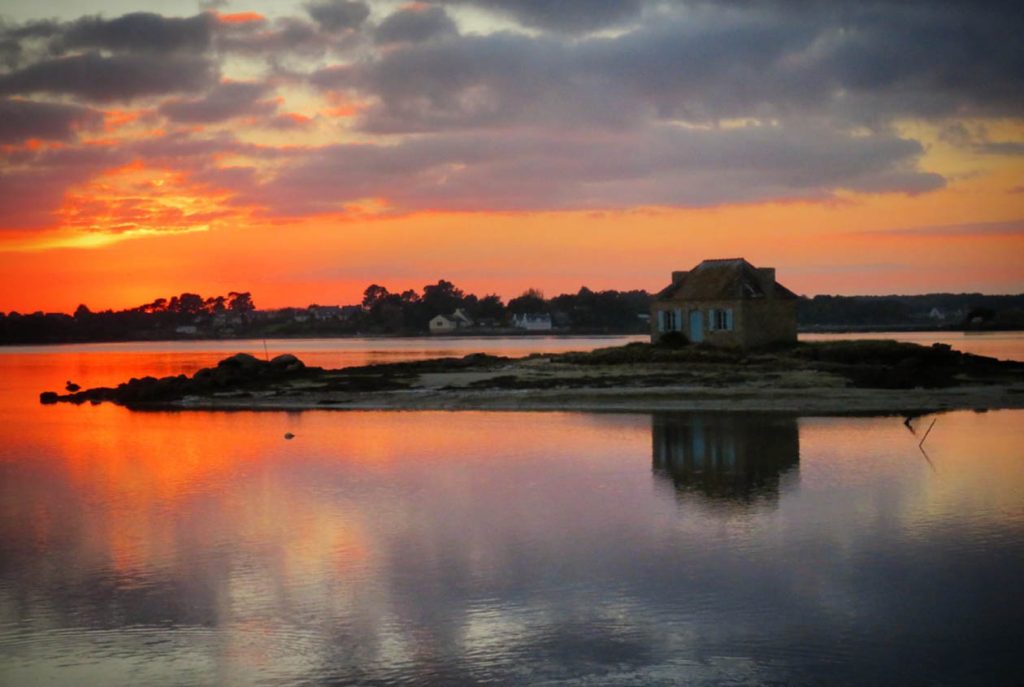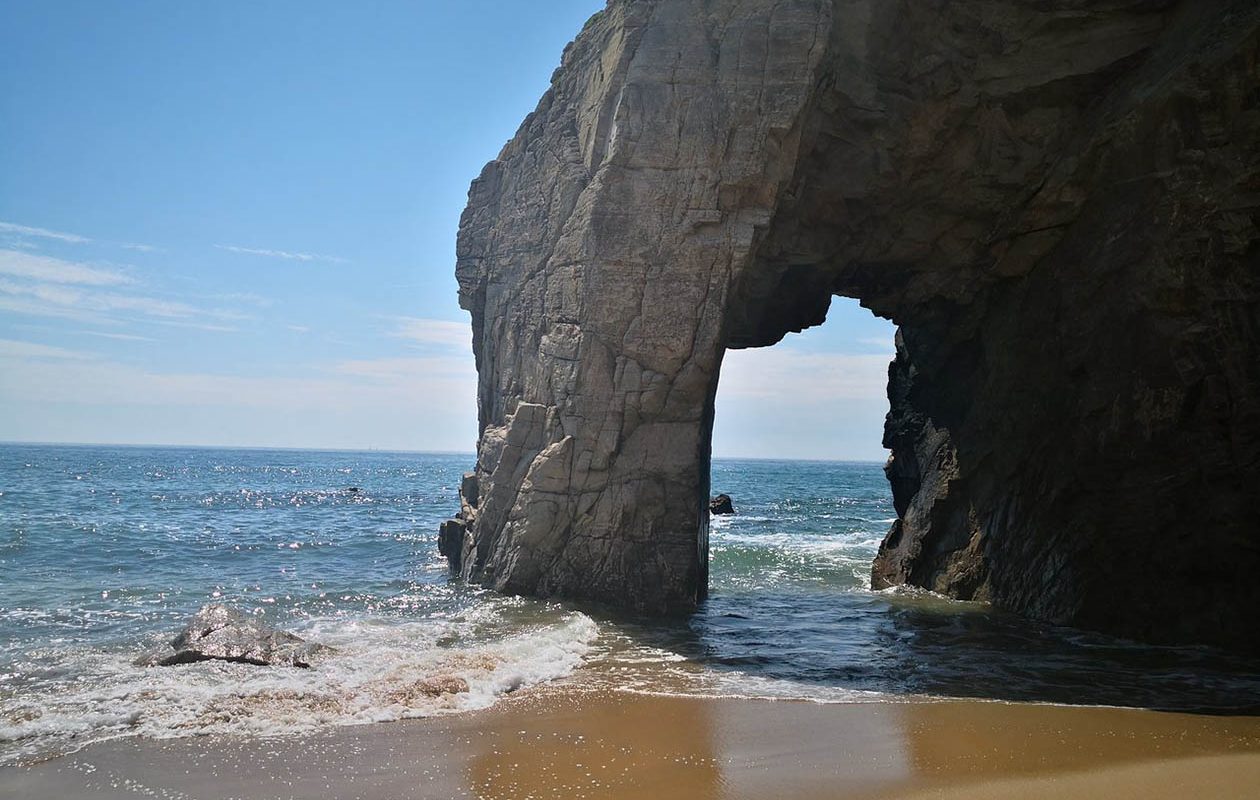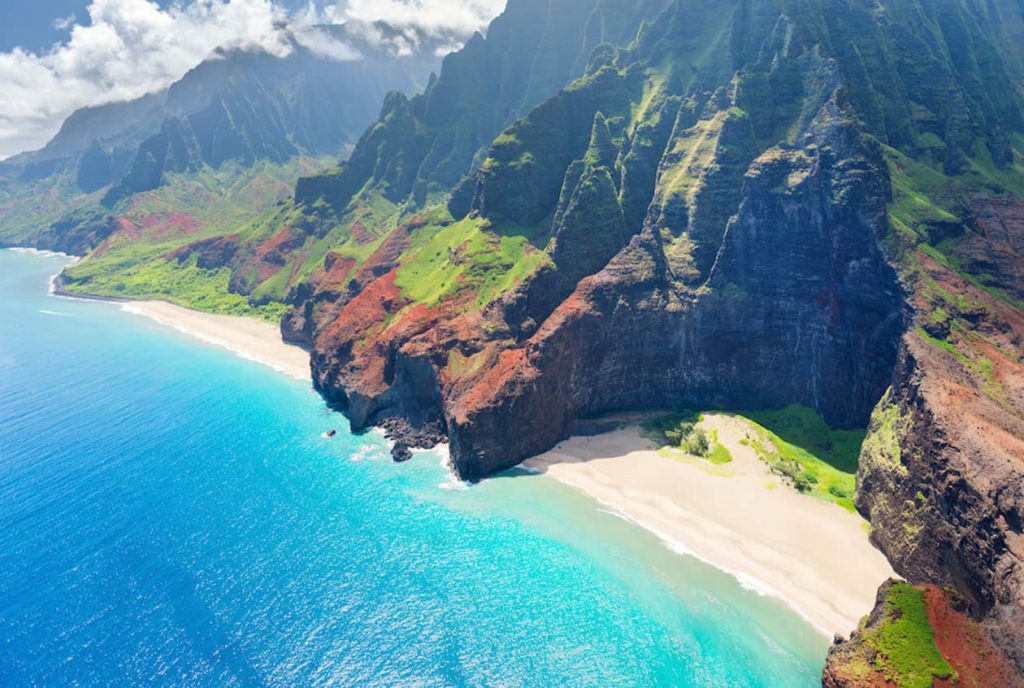Today, I’ll take you on a journey to the Quiberon Peninsula in the Morbihan region of Brittany, located in the northwest of France. This beautiful peninsula, renowned for its stunning natural scenery and rich historical heritage, has attracted countless visitors over the years. If you’re planning a trip to France in August or September, this destination should definitely be on your list.
1. Pointe du Percho: The Perfect Blend of Nature and History
Among the many picturesque spots on the Quiberon Peninsula, Pointe du Percho stands out as a must-visit location. This headland not only offers breathtaking views of the Atlantic Ocean but also houses remnants of World War II defensive structures, a stark reminder of the region’s historical significance. Standing on the cliffs of Pointe du Percho, with the vast Atlantic stretching out before you, you can feel the powerful connection between history and nature. It’s a paradise for photographers, especially at sunset when the horizon merges seamlessly with the sea, creating a scene that will leave you spellbound.
For those who enjoy hiking, this area is ideal. The trails offer numerous viewpoints along the way, allowing you to fully appreciate the untamed beauty of the Quiberon Peninsula. If you’re a history enthusiast, take some time to imagine the events that once unfolded on this land, adding depth to your visit.
2. Port Blanc Beach and the Arch of Port Blanc: A Perfect Duo of Beach and Rock Formations
Port Blanc Beach is one of the most popular spots on the Quiberon Peninsula, known for its expansive white sands and crystal-clear waters. This beach is perfect for families and water sports enthusiasts alike, offering activities such as swimming, surfing, and sailing. On a hot summer day, lounging on a sunbed here, listening to the soothing sound of the waves, is an unparalleled way to relax.
As you stroll along the beach, you’ll come across another natural marvel—the Arch of Port Blanc. This naturally formed rock arch stands proudly at the edge of the shore, drawing visitors from all over to witness its grandeur. This spot is particularly favored by photographers and painters, as the combination of rock and sea creates a stunning tableau.
3. Côte Sauvage: Experience the Untamed Beauty of Nature
The Côte Sauvage, or Wild Coast, on the western side of the Quiberon Peninsula, showcases nature in its most raw and powerful form. With its steep cliffs and crashing waves, the Wild Coast embodies the untamed spirit of the Atlantic Ocean. On windy days, standing on the edge of the cliffs, you can almost feel the roar of the sea as it collides with the rocky shoreline.
Hiking is the best way to explore this rugged area. As you follow the trails, you’ll discover hidden coves and secluded beaches, untouched by crowds. For nature lovers and outdoor enthusiasts, the Côte Sauvage offers endless surprises and breathtaking views.
4. Quiberon: The Heart of the Peninsula
The town of Quiberon is the main hub of the peninsula and a must-visit for travelers. This charming town is filled with the typical Breton atmosphere, with narrow streets lined with colorful houses that exude the distinctive charm of France’s western region. Quiberon’s cafes and restaurants offer an authentic taste of Brittany, with dishes like galettes (savory crepes) and cider being local favorites.
Quiberon itself is home to several points of interest. The town’s markets are a treasure trove of local specialties and crafts, perfect for picking up unique souvenirs. Additionally, there are historical buildings and museums that delve into Brittany’s past and culture. If you’re into maritime history, the Quiberon harbor is a fascinating place to explore.
5. Château de Turpault: A Glimpse into Medieval Grandeur

Located at the entrance of the Côte Sauvage, Château de Turpault is a striking medieval castle. With its Gothic towers and stone walls set against the backdrop of the blue sky, the castle is a true architectural marvel. Although the château is privately owned and not open to the public, admiring its impressive exterior from the outside is an experience in itself.
Surrounded by the sea and lush greenery, the château provides a picturesque setting for photography. Whether at dawn or dusk, the silhouette of the castle against the natural landscape creates a scene straight out of a fairytale.
6. Pointe de Conguel and Port Haliguen: Delving into Brittany’s Maritime Legacy
Pointe de Conguel, located at the southern tip of the Quiberon Peninsula, is a natural site that should not be missed. The scenery here is breathtaking, with panoramic views of the ocean on all sides, making it one of the best spots to catch the sunrise. Pointe de Conguel also features well-maintained trails, allowing visitors to enjoy the tranquil natural surroundings and experience the power of the sea up close.
Not far from Pointe de Conguel lies Port Haliguen, a small port that exudes the quintessential charm of Brittany. The docks are lined with brightly colored fishing boats, offering a glimpse into the local maritime culture. Around the harbor, you’ll find cozy restaurants and cafes serving fresh seafood and delicious French pastries, making it an ideal spot for a leisurely meal.
7. Plage de Kermahé and the Isthme de Penthièvre: Embracing the Beauty of Sand and Sea
Plage de Kermahé is another stunning beach on the Quiberon Peninsula, known for its soft white sands and azure waters. The beach is less crowded, providing a sense of seclusion that feels like a hidden paradise. It’s an excellent spot for swimming, sunbathing, or simply taking a peaceful stroll along the shore.
The Isthme de Penthièvre, a narrow strip of land connecting the Quiberon Peninsula to the mainland of France, is a geographical wonder. On one side, you have the wild, open ocean, and on the other, a calm bay—creating a striking contrast. The sandy shores along the isthmus are perfect for sunbathing and water sports, and the area’s unique landscape offers plenty of opportunities for photography.
8. La Ria d’Étel: A Microcosm of Breton History and Culture
La Ria d’Étel, located near the Quiberon Peninsula, is an inland body of water known for its serene environment and abundant wildlife. The surrounding area is dotted with small villages, each with its own distinct history and culture. Here, you can explore traditional Breton homes and learn about the region’s rich fishing heritage.
A boat tour is highly recommended to fully appreciate the beauty of La Ria d’Étel. This allows you to take in the scenic surroundings while also providing an opportunity for fishing and boating. It’s a great place to spend quality time with family and connect with nature.
9. Île de Saint-Cado and Carnac: Discovering Brittany’s Ancient Mysteries

Île de Saint-Cado, situated at the mouth of La Ria d’Étel, is a small but beautiful island known for its stone houses and ancient church. The island’s quaint village seems frozen in time, offering a glimpse into the traditional architecture of Brittany. Walking through its streets, you can feel the deep historical roots and the simple lifestyle of its residents.
Carnac, located north of the Quiberon Peninsula, is famous for its enigmatic stone alignments. The thousands of massive stones, arranged in mysterious patterns, create an awe-inspiring historical landscape. Archaeologists believe these megaliths date back to the Neolithic period and were used for religious or astronomical purposes, though their exact function remains a mystery. Visiting Carnac allows you to delve into Brittany’s prehistoric past while experiencing the mystical atmosphere of the site.
10. The Gulf of Morbihan: A Jewel of Brittany
The Gulf of Morbihan, situated to the east of the Quiberon Peninsula, is a natural bay renowned for its stunning coastline and rich biodiversity. The gulf is dotted with hundreds of small islands, each with its unique scenery and history. A boat tour through the Gulf of Morbihan is the best way to explore these islands, offering breathtaking views and a chance to observe the local wildlife.
The Gulf of Morbihan is also a haven for outdoor enthusiasts. Numerous trails and bike paths wind through the area, making it ideal for hiking and cycling. For those who love water sports, the gulf offers a variety of activities, including sailing and kayaking.
The Quiberon Peninsula and its surrounding areas boast an extraordinary blend of natural beauty and historical richness that captivates every visitor. If you’re planning a trip to France in August or September, the Quiberon Peninsula is a destination that should be at the top of your list. Here, you can immerse yourself in the rugged landscapes shaped by the Atlantic, uncover the mysteries of ancient Brittany, and enjoy an unforgettable travel experience.



